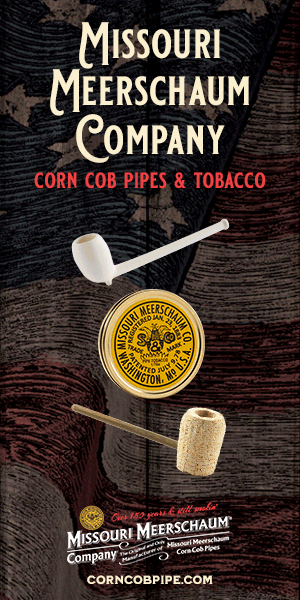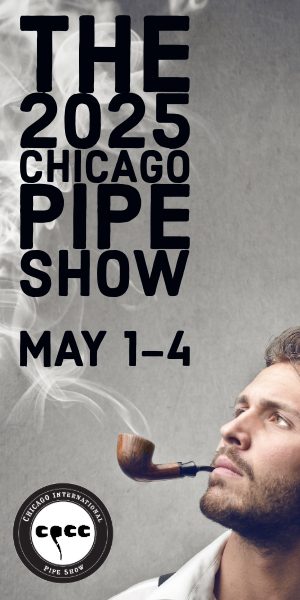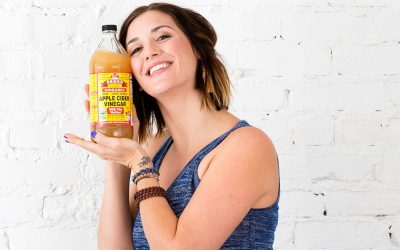@ lightmybriar, I have wondered the same thing. Below is a cut and paste from a previous post that discussed the McClelland smell. As has been said McClelland put a lot of time in producing their tobacco and unless someone else wants to spend the time to age and sweat the leaf its not going to happen, its not a simple spray it with vinegar and you're done........
http://pipesmagazine.com/forums/topic/why-do-all-mcclellands-blends-smell-like-ketchupcatsup
".....The aroma is so strong and distinct to McClelland's, it's hardly a surprise this question is so perennial.
Neither Mary nor Mike seem to indulge in forum shenanigans, though they do answer the telephone (anyone remember those?). Here's what Mike said when asked:
I picked up the phone and suggested to the McClelland folks that we address this Posting. It did not take much encouragement. If you prefer bottom lines, there is no ketchup used in any of their blends what so ever.
So why does it smell like ketchup?
McClelland buys and ages their leaf in their storage building in the state of North Carolina for three to five years. During this period of time there occurs a natural "sweating" of the high sugar content leaf.
The next step is to ship the aged leaf to their factory in Kansas City where it is pressed and further aged in cake form for a period of time. Than it is further aged, in their tins, for one to two years before shipping to retailers.
The aroma, or imagined taste, is in reality a natural fermentation that takes place during this entire ageing process. Their tobaccos are of the best of high grade and quality with a very high sugar content, which enables this "natural" process to occur.
from here, 5 years ago http://pipesmagazine.com/forums/topic/an-fyi-for-smokers-of-mcclelland-matured-virginias
Here's a good one from Ted Gage essentially saying the same
This [what people refer to as ketchupy/vinegary] is a direct result of the intense and intentional stoving process used for selected blends, but is by no means “characteristic” of McClelland blends. It is also a completely natural occurance caused by the stoving, aging and caking process, and something that frequently occurs with Virginia tobaccos over the course of many years of tin aging. It is not contrived by the use of flavorings or any artificial processes.
As anyone who does some cooking knows, heat and pressure have the ability to transform ingredients from one thing to something completely different. A tough and terrible pork shoulder roast, cooked slowly for hours, can transform into something totally soft and delectible. And think about Perique, which is basic Burley tobacco that under tremendous pressure and with sufficient aging, transforms into a completly different tobacco. Clearly, the same is true with Virginia leaf. It can range from bright flue-cured to something dark and unctuous that is quite different from the original product. My point is that the processing makes all the difference.
and lastly an extract from a Q&A with GLP, who answers generally
H.R. writes: Many have commented on the "ketchup" odor of certain Virginia blends, the result of vinegar produced during fermentation. (I always noticed a pronounced "dill pickle" aroma in the old Sullivan Powell’s Gentleman’s Mixture.) Do tobacco processors and blenders use specifically chosen yeast, acetobacter or lactobacillus cultures to engender the results they want, or are they just letting nature take its course, as did the winemakers, brewers and bakers of old? Has anyone ever tried using Dekkera/Brettanomyces to produce a "Belgian" style pressed Virginia flake?
Pease: Personally, I’ve never quite been able to grok the "ketchup" thing. Certainly, there are some tobaccos that exhibit an acetic aroma, and with some expansion of the imagination, I might be able to find something akin to BBQ sauce on occasion, or perhaps Branston Pickle, but not ketchup. I’ve even gone so far as to open a bottle of ketchup and compare its aroma side-by-side with that of the most infamous of "ketchup" tobaccos, and I still don’t get it. I think people confuse their condiments, sometimes. Next thing you know, it’ll be mustard, and arguments will ensue over whether it’s Dijon or yellow.
More seriously, you’re right in that fermentation is the cause of this notable aroma, whatever someone may choose to call it. To the best of my knowledge, blending houses don’t inoculate their tobaccos with specific microflora in order to get these effects, but rely on the wild yeasts and bacteria that are present in their environment. One one occasion, I managed to recreate a similar effect, albeit accidentally, so I’m quite sure it’s not the result of any sort of additives; just the natural process that tobacco goes through under certain controlled conditions.
I like the idea, though, of using specific saccharomyces to excite fermentation in a tobacco. It might make for an interesting red ale. And, from the trivia department, the aging of tobacco was once referred to as lagering. Maybe beer and tobacco are linked more closely than we know."









